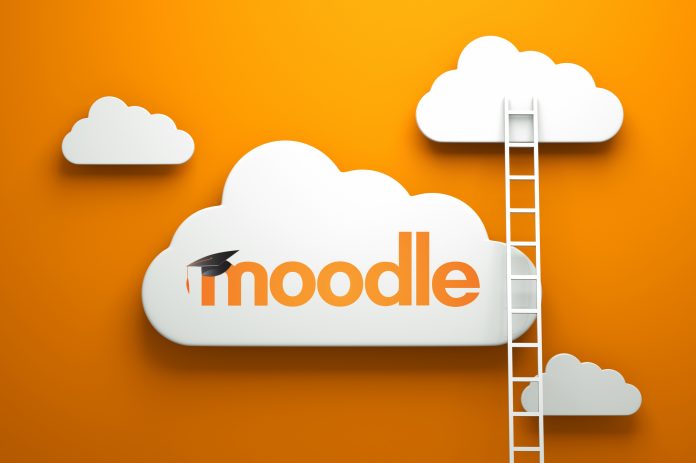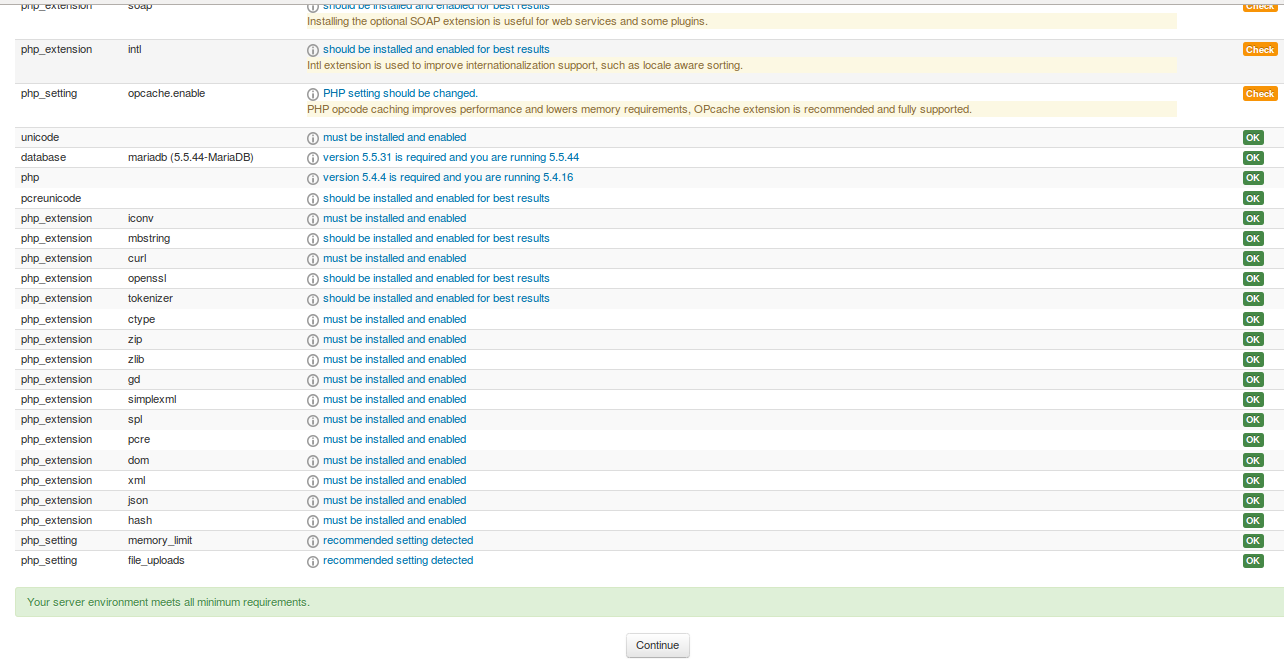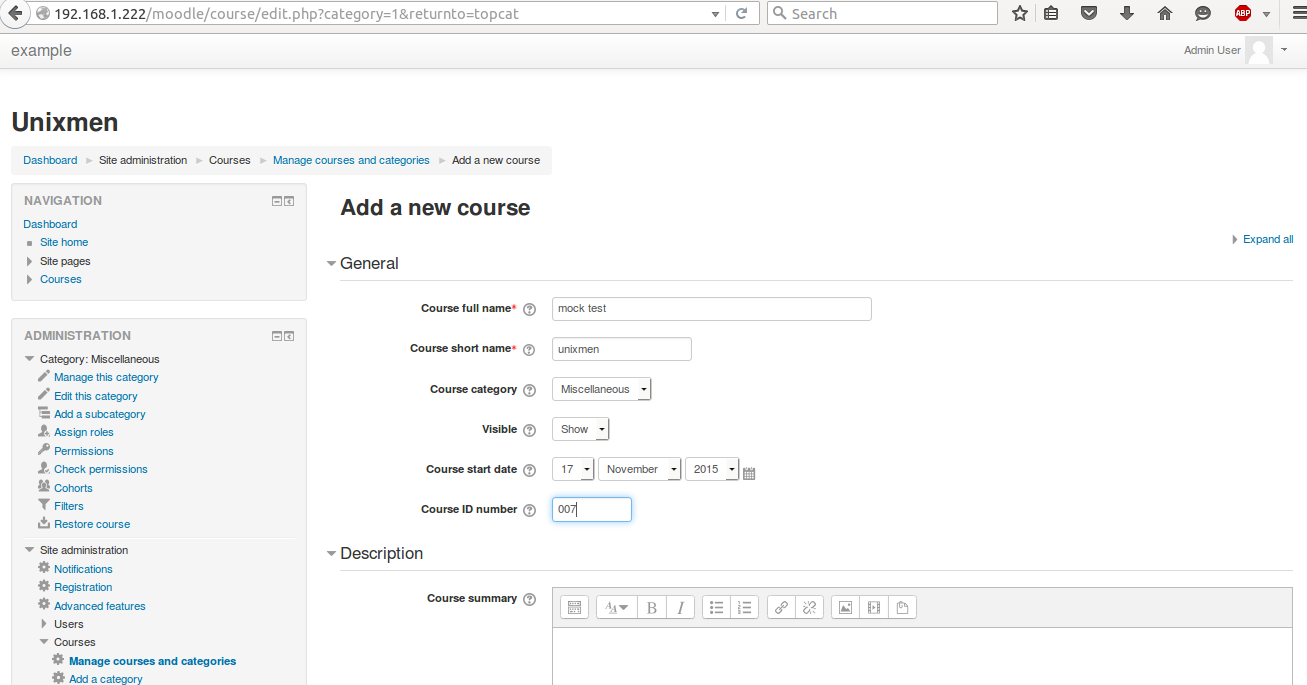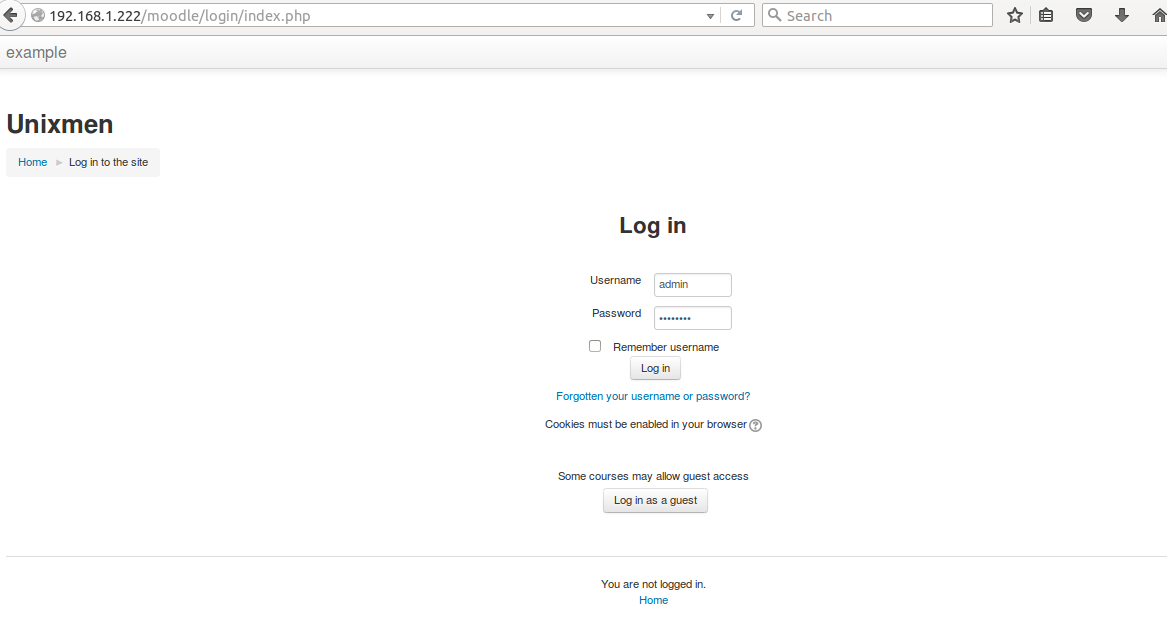Introduction
I believe that most of us are already familiar with Moodle Online e-learning platform, many articles has been published several times on uixmen, reference links are provided below
- http://unixmen.com/install-moodle-learning-managment-system-on-centos-6/
- http://unixmen.com/how-to-install-moodle-cms-in-ubuntu/
- http://unixmen.com/install-moodle-learning-managment-system-on-centos-6/installation-moodle-2-5-build-20130627-mozilla-firefox_006/
Features
Moodle is a very popular online learning management platform which is used by educators, trainers, schools and colleges. It is highly customizable and easy to use utility with the help of which a user can create their own private website filled with multiple courses. Highlights of some of its features are listed below.
- Customizable dashboard
- Easy to use interface
- All in one calendar
- Multilingual support
- Bulk course creating and management
- Detailed reports and results generation capability
Installation
We will use updated version of moodle i.e. 3.0 with CentOS 7 platform.
Minimum 2 GB RAM, Dual Core Processor and 5 GB storage capacity will be sufficient. LAMP Stalk is required for software installation.
Update System
# yum update -y
Installed required LAMP stalk on CentOS 7
# yum install httpd mariadb mariadb-server php php-mysql # yum install php-iconv php-mbstring php-curl php-openssl php-tokenizer php-xmlpc php-soap php-ctype php-zip php-gd php-simplexml php-spl php-pcre php-dom php-xml php-intl php-json php-ldap php-pecl-apc
Start httpd and mysql services
# systemctl enable httpd # systemctl start httpd # systemctl enable mariadb # systemctl start mariadb
Create root admin password of mysql
# mysqladmin -u root password password
Create a database and a database user and assign all privileges to that newly created database user
Sample output
# mysql -u root -p MariaDB [(none)]> create database moodle; MariaDB [(none)]> create user 'unixmen'@'localhost' identified by 'password'; MariaDB [(none)]> grant all priviledges on moodle.* to 'unimxmen'@'localhost'; MariaDB [(none)]> flush privileges; MariaDB [(none)]> exit Bye
Download latest version of Moodle and configure web services accordingly
# cd /var/www/html # wget https://download.moodle.org/stable30/moodle-3.0.tgz # tar -xvf moodle-3.0.tgz # chown -R apache:apache /var/www/html/moodle # chmod -R 755 /var/www/html/moodle
Additionally, we have to create a data director for moodle under /var/www/ named as ‘moodledata’ which will be used by moodle, change permissions and ownership for that directory as required.
# cd /var/www/ # mkdir moodledata # chmod -R 755 /var/www/moodledata # chown -R apache:apache /var/www/html/moodledata
Restart httpd services
#systemctl restart httpd
Installation process is over at this stage, lets configure moodle server, open a browser type <ip_address>/moodle
Choose language and click next.
Choose a database driver (default) and click next


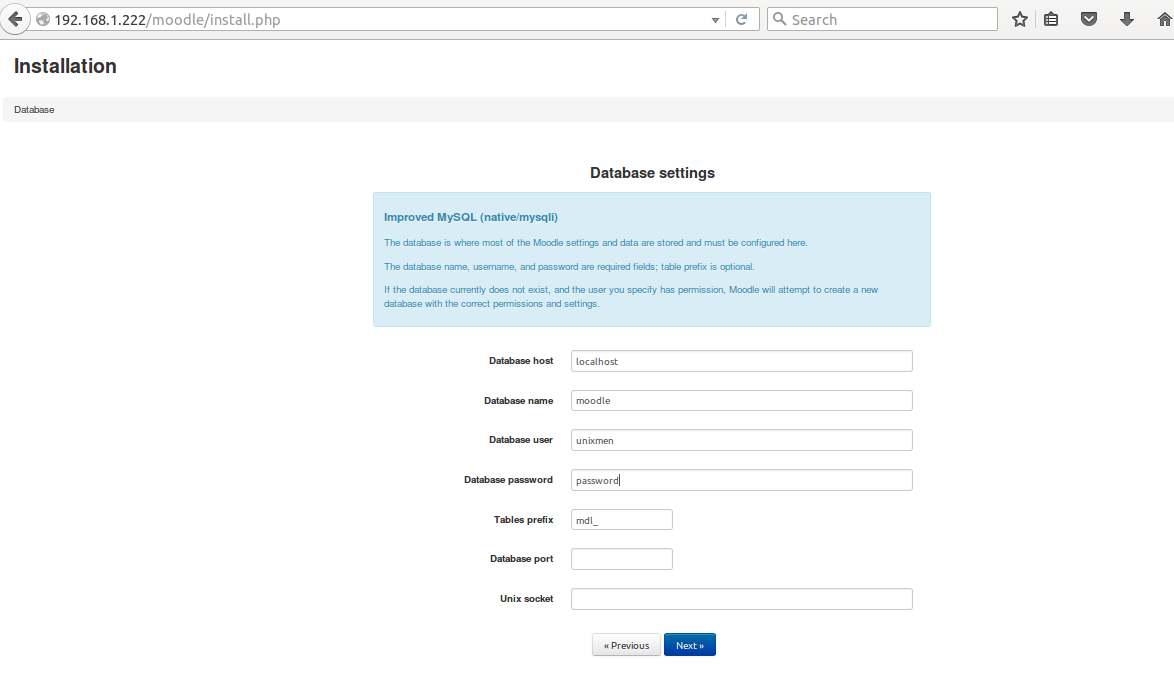
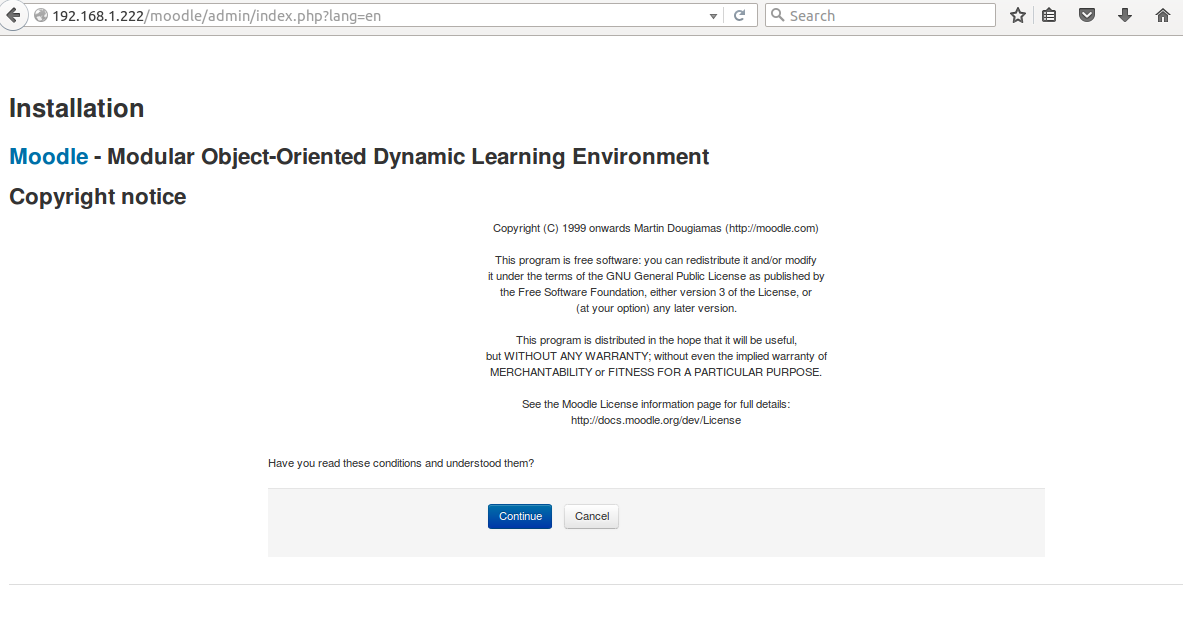
If a long list of green appear at this step, simply continue.
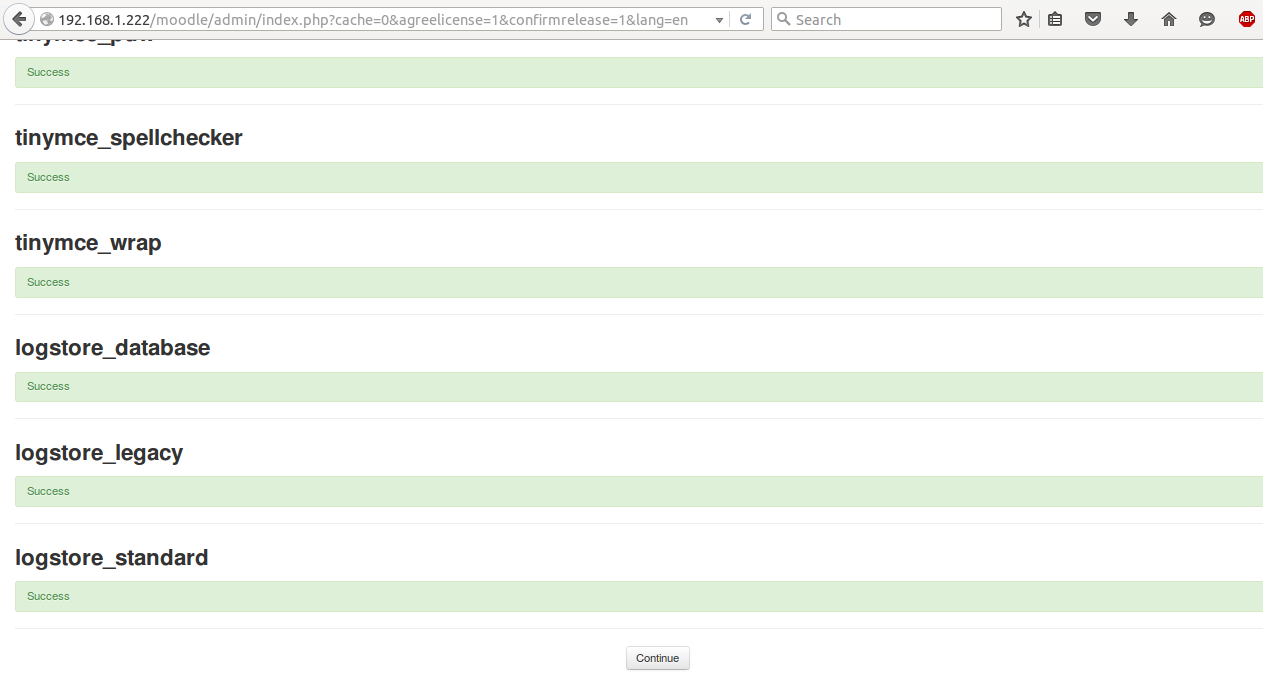
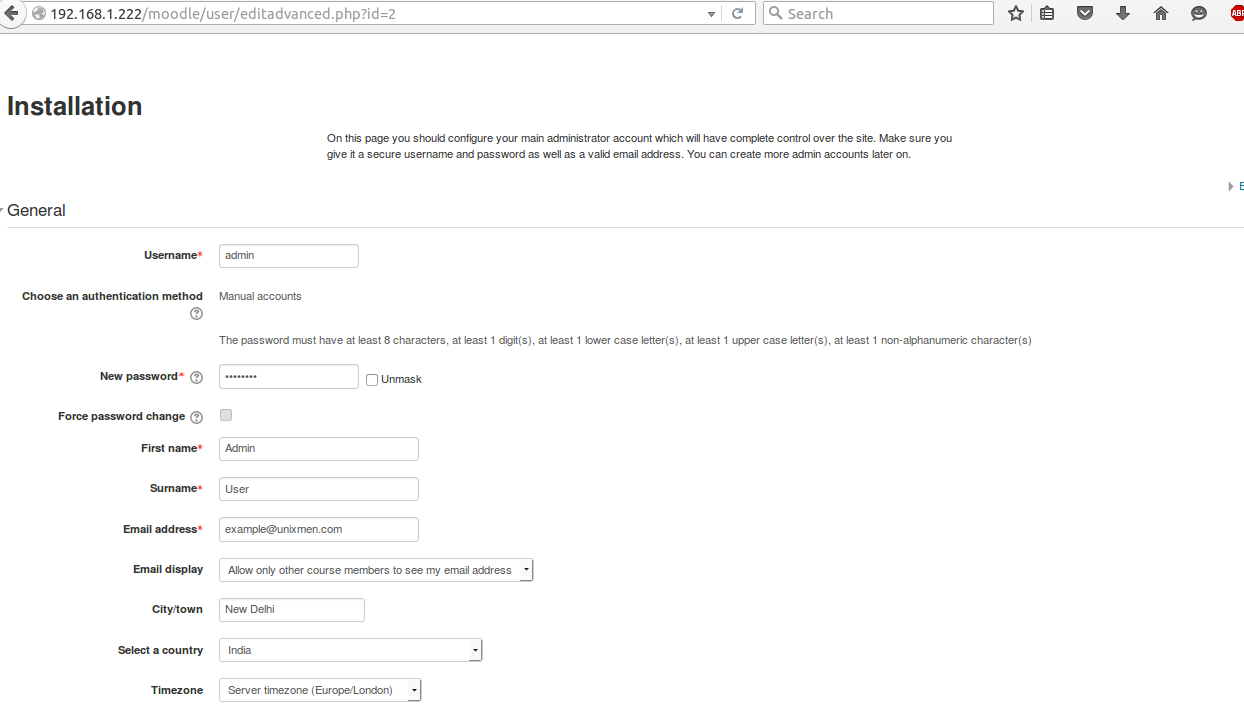
Conclusion
Moodle 3.0 appears more lightweight and sleek in first look, it is more fast as per my personal experience. A lots of commercial enterprises are already using noodle for their recruitment exams or other ability tests.


